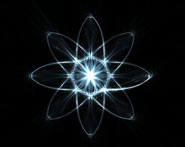


 الفيزياء الكلاسيكية
الفيزياء الكلاسيكية
 الكهربائية والمغناطيسية
الكهربائية والمغناطيسية
 علم البصريات
علم البصريات
 الفيزياء الحديثة
الفيزياء الحديثة
 النظرية النسبية
النظرية النسبية
 الفيزياء النووية
الفيزياء النووية
 فيزياء الحالة الصلبة
فيزياء الحالة الصلبة
 الليزر
الليزر
 علم الفلك
علم الفلك
 المجموعة الشمسية
المجموعة الشمسية
 الطاقة البديلة
الطاقة البديلة
 الفيزياء والعلوم الأخرى
الفيزياء والعلوم الأخرى
 مواضيع عامة في الفيزياء
مواضيع عامة في الفيزياء|
Read More
Date: 16-10-2020
Date: 16-10-2020
Date: 17-10-2020
|
Quantization of Electric Charge
Every elementary particle that has been detected individually by particle detectors has an electric charge that is an integer multiple of the charge on the electron. Almost all of the particles have a charge + e or – e, but since the 1960s, a few particles with charge 2e have been observed. Until the early 1960s it was firmly believed that this quantization of charge in units of + e or – e was a basic property of electric charge.
In 1961, Murray Gell-Mann, who for many years had been trying to understand the bewildering array of elementary particles, discovered a symmetry in the masses of many of the particles. This symmetry, based on the rather abstract mathematical group called SU2, predicted that particles with certain properties, could be grouped into categories of 8 or 10 particles. This grouping was not unlike Mendeleev’s earlier grouping of the elements in the periodic table.
When the periodic table was first constructed, there were gaps that indicated missing, as yet undiscovered elements. In Gell-Mann’s SU3 symmetry there were also gaps, indicating missing or as yet undetected elementary particles. In one particular case, Gell- Mann accurately predicted the existence and the properties of a particle that was later discovered and named the ω– (omega minus). The discovery of the ω– verified the importance of Gell-Mann’s symmetry scheme.
In 1964 Gell-Mann, and independently George Zweig also from Caltech, found an exceedingly simple model that would explain the SU3 symmetry. They found that if there existed three different kinds of particles which Gell-Mann called quarks, then you could make up all the known heavy elementary particles out of these three quarks, and the particles you make up would have just the right SU3 symmetry properties. It was an enormous simplification to explain hundreds of “elementary particles” in terms of 3 kinds of quarks.
Our discussion of quarks will be mainly reserved for the next chapter. But there is one property of quarks that fits into our current discussion of electric charge. The charge on a quark or anti quark can be + 1/3 e, – 1/3 e, + 2/3 e or – 2/3 e. The charge e on the electron turns out not to be the fundamental unit of charge. An even stranger property of quarks is the fact that they exist only inside elementary particles. For example, a proton or neutron is made up of three quarks and a π meson of two. All particles made from quarks have just the right number of quarks, in just the right combination, so that the total charge of the particle is an integer multiple of the electron charge e. Although the quarks themselves have a fractional charge ± 1/3 e or ± 2/3 e, they are always found in combinations that have an integer net charge.
You might ask, why not just tear a proton apart and look at the individual quarks? Then you would see a particle with a fractional charge. It now appears that, due to an unusual property of the so-called color force between quarks, you cannot simply pull quarks out of a proton. The reason is that the color force, unlike gravity and electricity, becomes stronger, not weaker, as the separation of the particles increases. We will see later how this bizarre feature of the color force makes it impossible to extract an individual quark from a proton.



|
|
|
|
إجراء أول اختبار لدواء "ثوري" يتصدى لعدة أنواع من السرطان
|
|
|
|
|
|
|
دراسة تكشف "سببا غريبا" يعيق نمو الطيور
|
|
|
|
|
|
لأعضاء مدوّنة الكفيل السيد الصافي يؤكّد على تفعيل القصة والرواية المجسّدة للمبادئ الإسلامية والموجدة لحلول المشاكل المجتمعية
|
|
|
|
قسم الشؤون الفكرية يناقش سبل تعزيز التعاون المشترك مع المؤسّسات الأكاديمية في نيجيريا
|
|
|
|
ضمن برنامج عُرفاء المنصّة قسم التطوير يقيم ورشة في (فنّ الٕالقاء) لمنتسبي العتبة العباسية
|
|
|
|
وفد نيجيري يُشيد بمشروع المجمع العلمي لحفظ القرآن الكريم
|